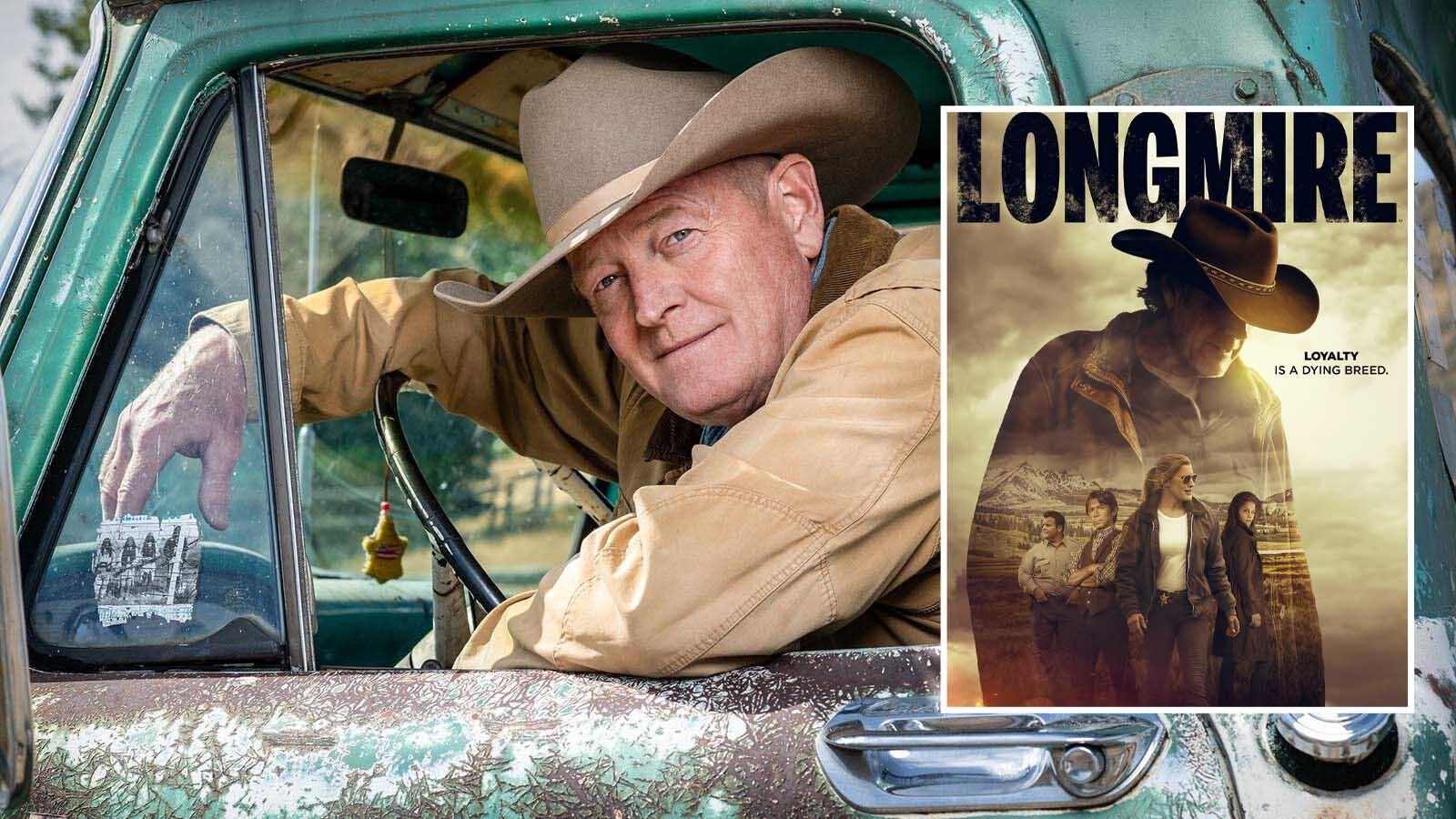The former Wyoming mining town of Kirwin isn’t a ghost town just because it’s long been abandoned, it’s actually haunted. At least that’s the local lore, which says Kirwin wasn’t deserted because the minerals ran out.
On the contrary, prospectors were still finding gold, silver and copper veins when they decided those riches weren’t worth sharing the town with its ghosts. It was fear of the unknown and a terrible belief that the town was cursed that chased them away from their homes in the beautiful valley they loved.
Many believe that not all the people of Kirwin left this small village southwest of Meeteetse that almost became the permanent home for Amelia Earhart, who was building a cabin there when she disappeared in 1937.
Over the years, cowboys, sheepherders and, in more recent times, off-roaders and ghost hunters have all heard voices where there should only be silence.
About Kirwin
In 1921, journalist Andrew O’Donoghue visited Kirwin and lamented that it was no longer the thriving town of his youth. The mining town had been founded in the late 1800s with rumors of gold and silver literally laying on the ground.
“In a picturesque valley in the wild region around the head of Wood River flourished one of the most modernly equipped mining camps in the West,” O’Donoghue wrote after his visit. “Today, where once the echoes resounded in the thunder of blasting and the noises of machinery, there is hardly a sound to break the stillness, save the scream of the eagle, or the tinkling of the bells of a band of sheep during the short summer season.
“The history of Kirwin is romantic,” he told his Casper Daily Tribune readers. “Two prospectors, Jim Kirwin and Harry Adams, were journeying through the mountains on their way to Montana. Seeing a deer on a mountain side one of them fired at the animal.
“Climbing up the steep ascent to find whether they had felled their game, the men noticed some outcroppings in the rocks, which to their practiced eyes, clearly showed copper ore of a high grade.”
The men decided to stay and made a group of claims.
Soon a town was laid out when other prospectors and miners arrived. According to O’Donoghue, Kirwin was never a shanty town since its founders were wealthy investors from back East.
The Modern Lively Town
A sawmill had been installed so that many of the residences, and other buildings, were frame structures with concrete chimneys. Cement for the construction of these was hauled by wagon from Cody, a distance of more than 70 miles.
O’Donoghue described a thriving, modern town in the middle of the isolated Wyoming wilderness that even had its own power plant that cost $15,000 to build. Telephone lines were extended from Meeteetse 40 miles away so that the camp had communication with the outside world.
“Most of the residences, both log and frame, were papered internally, some containing bath rooms and other modern conveniences,” O’Donoghue wrote. “A few of these buildings, including a hotel and the spacious club house, were two-story structures. Almost every building was lighted by electricity from the powerhouse about two miles down the river.”
The miners and their families not only enjoyed the luxuries of modern life, but also participated in a thriving social life.
“A saloon, a dance hall, and other resorts flourished and while Kirwin society might be slightly deficient in some of the more exquisite refinements of New York,” O’Donoghue joked, “it was literally ‘higher’ by nearly two miles.”
Fleeing From Kirwin In Terror
But the activity and modernizing of the area apparently didn’t sit well with the spirits that were stirred up there.
“It might be said that the beginning of the end of Kirwin was coincident with a snowslide on February 5th, 1907,” O’Donoghue wrote. “It killed four persons and wrecked several buildings in town. Fearing a repetition of similar disasters, many left the place immediately.”
Sitting at the base of 12,000-foot peaks, the U.S. Forest Service explained that Kirwin was continually menaced by avalanches, the "white death." On this day, after several days of heavy snowfall, a massive avalanche roared down Brown Mountain.
“Some of the superstitious declared that the tragedy figured ill for the camp,” O’Donoghue said, “and it would seem as if their prophesies were fulfilled as soon, mine after mine began to be closed and few were ever reopened, even temporarily.”
Abandoned Ghost Town
When the townspeople fled Kirwin, they left behind their belongings.
O’Donoghue described the expensive machinery, tools and implements that were scattered around the town. Even modern electrical appliances and telephone boxes were left in place.
“It would tax the credulity of anyone who had never visited the place,” he wrote. “Desolation is king in Kirwin. Birds build their nests and make their homes in what were once those of men.”
Even in 1921, O’Donoghue spoke of the sad state of dilapidation of the once stately office buildings and miner’s cabins. Roofs had blown off and doors and windows were gone.
Mystery
“The actual cause of the ultimate abandonment of the camp has always been somewhat shrouded in mystery,” he wrote.
Although rumors of the ore running out, feuds between stakeholders or that the railroad refused to come were reasons for Kirwin to be abandoned, O’Donoghue was not convinced.
“There has never been anything tangible to justify such an assumption,” he wrote. “One thing is certain, there is wealth in Kirwin. The writer has picked out the sides of some tunnels and found galena of a high grade.”
So what really chased out the occupants of the mining camp? And did they all really leave?
Ghostly Occupants
Many of the buildings of Kirwin remain standing, and over the years people have sought refuge in these structures only to realize they are not alone.
Fred Cozzins told one such tale about the ghostly inhabitants of Kirwin to Debra D. Munn, author of “Wyoming Ghost Stories.”
“I first heard the story over 30 years ago from an old-time cowpoke,” Cozzens said. “When he was young, he and another cowboy were working for someone in Kirwin. One night, the two of them were caught in a blizzard and realized that they couldn’t make it back to camp.
“They felt lucky to find an abandoned building to shelter them from the storm, and they tied up their horses where they would be safe and walked into what had obviously been the old saloon.
“The bar was still in place, as were the tables and chairs. The wind was making a terrible racket with all the loose-fitting doors and windows rattling and banging and whistling. The intensity of the storm didn’t scare the men, since they were relatively safe inside.”
The young men were joking and laughing over their predicament when suddenly, they both stopped and stared at each other in disbelief.
The unmistakable sounds of voices and moaning could be heard over the storm.
They were terrified but knew that if they left, they would freeze to death. With no recourse, the young cowboys finally sat down with the boiler at their back.
“The other cowboy held his gun cocked and ready across his lap all night,” Cozzen said. “He was half-expecting something to attack them. They just sat there all night and listened to the mysterious sounds all around them. It was just as if the old saloon had come alive again.
“They never heard the voices clearly, although they could make out a few words now and then. Most of the time, it sounded like everybody was in good spirits, although there were occasional sounds of fighting, too. No gunshots or anything, just the angry voices of some old boys arguing.”
Some believe that the young cowboys experienced a residual haunting, a past event playing in the present but with no interaction or connection to the present.
Whatever happened, years after the incident, the old cowboy was still afraid of Kirwin and his night in the saloon with the past.
Ghost Hunts
In 1999, the U.S. Forest Service, with several partners, began the stabilization and restoration of Kirwin.
The remaining old, abandoned buildings have been saved and today, off-roaders, tour groups and ghost hunters are welcome to explore the abandoned mining camp. Tools still lay where they were last used, rusted and overgrown with mountain vegetation.
There have been other reports over the years of voices that continue to be heard in Kirwin.
“The wishful inhabitants left a piece of themselves behind when they fled Kirwin, giving the notion that the ghost town is in fact, home to something supernatural,” wrote the editor of the Meeteetse Visitor Center website. “Current day visitors to Kirwin can explore the buildings and the land at their own leisure. The buildings smell of dank decay and the lack of light can make the hair on the back of your neck stand alert.”
One thing is certain, mystery continues to shadow the once lively town of Kirwin and it just may be that some of the residents are not ready to leave.
Jackie Dorothy can be reached at jackie@cowboystatedaily.com.











